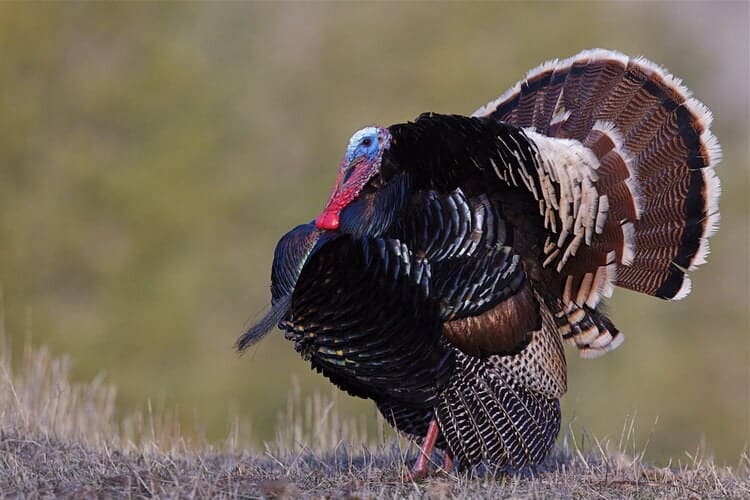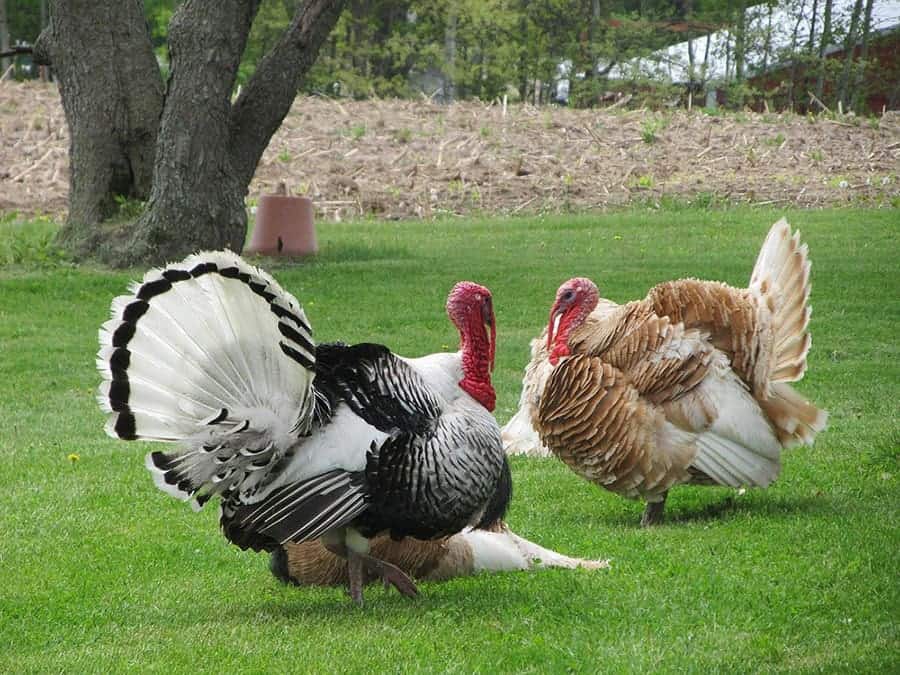Are you familiar with the expression strut your stuff? It means to do something which you know you are good at in a proud and confident way in order to impress other people. How is that related to turkeys? “Strutting” is the term used to describe the behavior of a turkey puffing its feathers. This is what makes this bird go from bland to grand.
Indeed, turkeys exhibit this fascinating behavior to attract mates, show their dominance, or defend against predators. Let’s look at each of these reasons in more detail.

The 3 Reasons Turkeys May Puff Up
1. Strutting Is a Courtship Display

In general, strutting is associated with the breeding season: male turkeys inflate their feathers and spark their colors to wow females. This is not, however, an atypical behavior in the animal world; many male birds seem to be more favored by nature than females. Indeed, males generally sport a more shimmering and flamboyant plumage than females and also possess other characteristics that allow them to impress their female counterparts. This flamboyant manifestation of virility always has the same goal, that of attracting a female to lead to eventual mating.
Moreover, in the case of turkeys, it is not only mature males who have the ability to strut: optimistic young gobblers may also strut around in the presence of hens in the vain hope of stimulating a breeding session.
2. Strutting Is a Show of Dominance
Turkeys don’t strut their stuff only during the breeding season. Indeed, these birds can puff up in the presence of other males as a sign of dominance. Two turkeys fighting for alpha status will both have their feathers well prickly. On the other hand, strutting is not only the prerogative of male turkeys; hens are also capable of exhibiting this behavior, although the result is less impressive. Females will use this innate behavior to show their dominance over other females.
3. Strutting Can Be Used as a Defense Mechanism
Another reason for strutting is that it would be used as a defense mechanism. Females or males inflate their plumage to intimidate a predator threatening their brood. So, whenever turkeys sense a threat, be it human or animal, they can use this behavior to show the predator that it is likely to go wrong if it decides to attack!

What Are the Characteristics of the Strut?

You have probably seen pictures of turkeys strutting around, or you may be a seasoned hunter used to observing this behavior in the wild.
- First, the turkey lowers its primary feathers until they touch the ground.
- Then she forms a fan with her tail.
- She positions all the feathers on her back and chest in an upright position.
- She lowers her head and neck in an “S” shape.
Additionally, at the base of each feather are small muscles that allow turkeys to move their feathers. These muscles are connected to other very small muscles in the skin. So, when a turkey struts, she contracts the muscles that control the position of the feathers, causing the body’s feathers to stand up.
The turkey is now ready to impress females or intimidate rivals!
When Do Turkeys Strut?
Turkeys don’t spend all day strutting, despite what photographs of turkeys captured in their natural habitat might suggest! In fact, outside of the breeding season, these birds are quite relaxed.
Nevertheless, it goes without saying that the periods of strutting increase drastically when the males seek to attract the females for mating and when they must establish the hierarchical order between the different males. The turkeys can then exhibit their finest features for a few seconds up to several hours, depending on the situation.
Where Do They Do It?
Turkeys strut wherever they want: this can be in an open area in the corner of a field or in a bushy forest path. They do, however, look for certain attributes, such as open, well-lit areas that allow the turkey to make its characteristic chuckle. Moreover, turkeys tend to return to the same sites year after year, which inevitably helps hunters or other budding ornithologists to find them.

Final Thoughts
Turkeys are much more than a delicious Thanksgiving meal! They are fascinating birds to watch, and one of their most interesting behaviors is strutting. Now that you know why, where and when turkeys puff up, you might be inclined to go and observe this behavior yourself in their natural habitat!
Featured Image Credit: PublicDomainPictures, Pixabay
